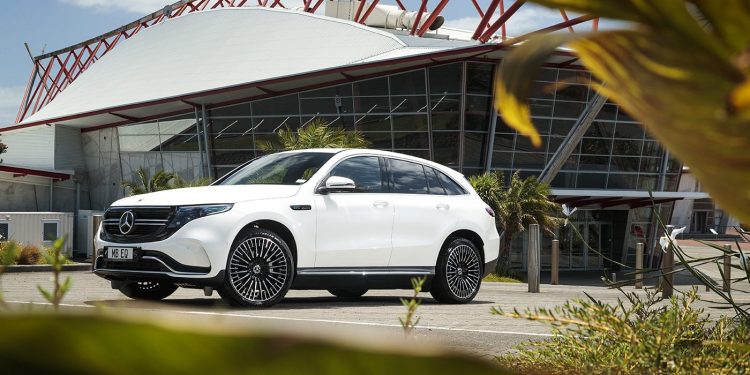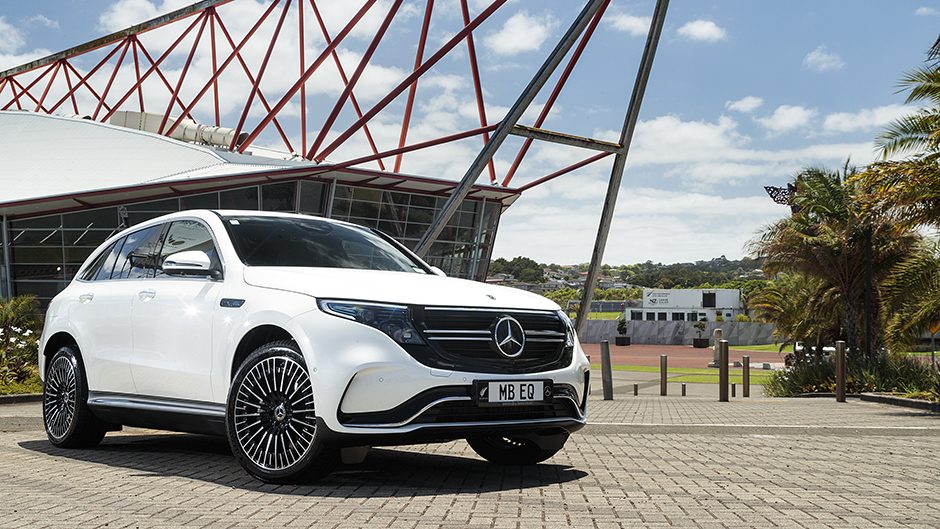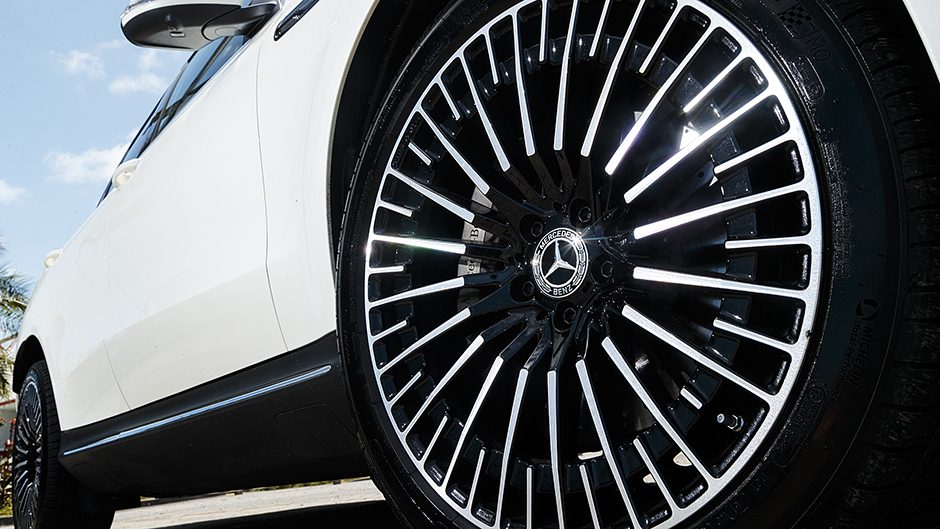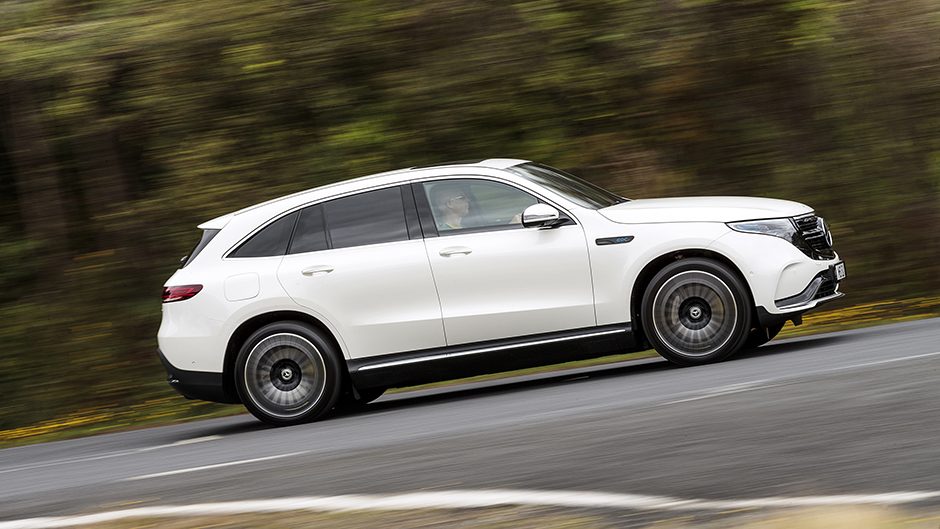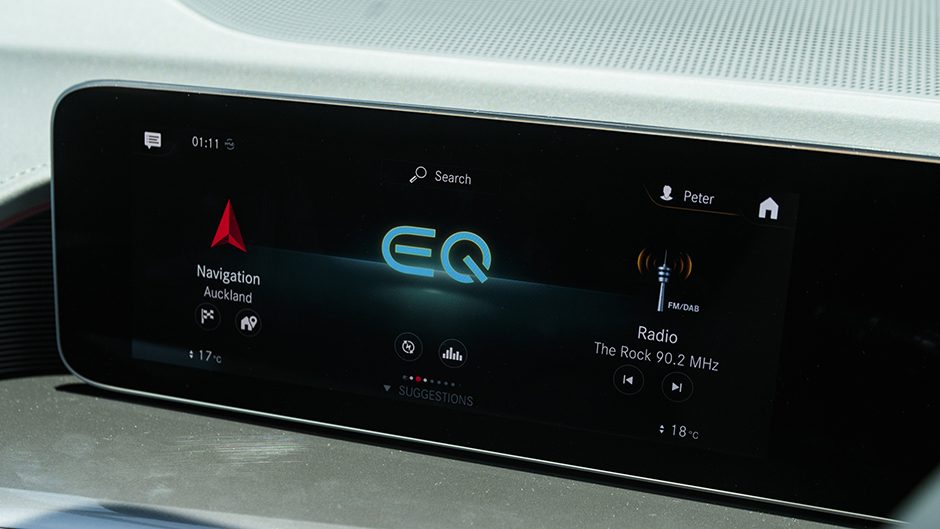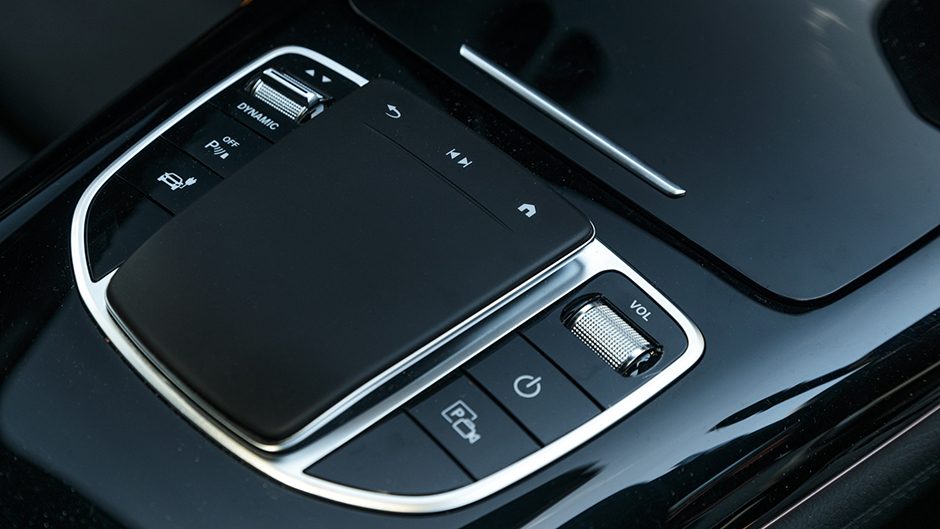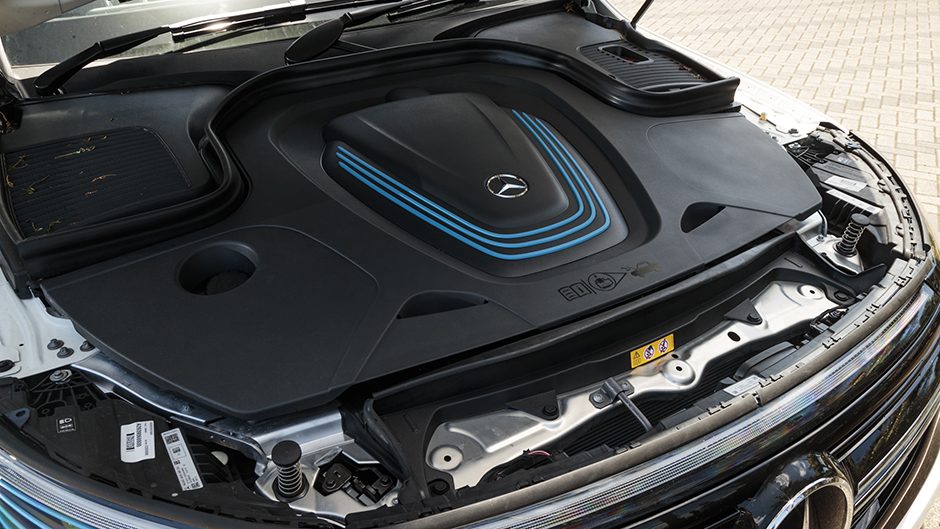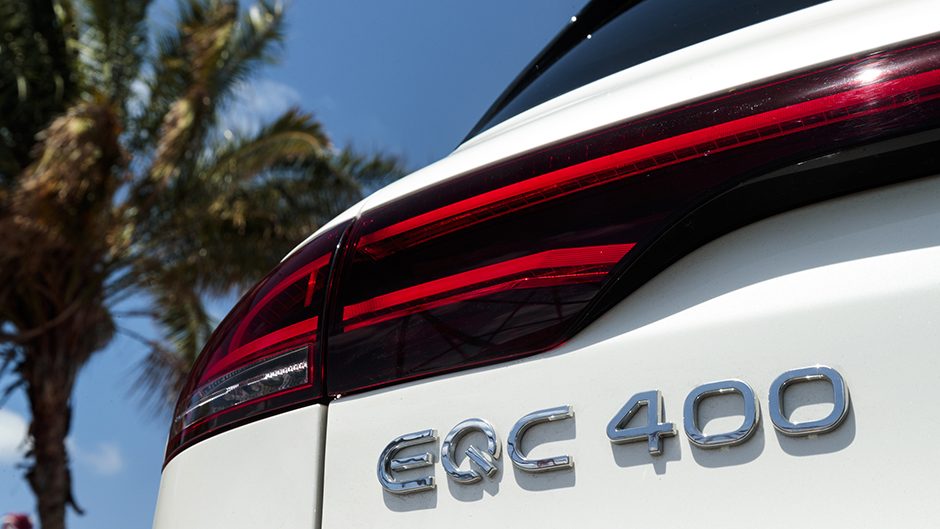2020 Mercedes-Benz EQC 400 review
Words Peter Louisson | Photos Tom Gasnier
Mercedes is the last of the big german car makers to go fully electric, launching its first eq model recently. Similar in price to e-tron, how does it stack up?
It’s an historic start to the new decade, at least for Mercedes-Benz NZ which has just launched its first full battery electric vehicle. The EQC 400 4Matic has nothing to do with the Earthquake Commission and everything to do with an AWD SUV without tailpipes. This is the archrival to Audi’s e-tron 55. Despite its smaller battery pack, it will have virtually the same range as the e-tron, around 400km, but you’ll have more fun doing those, we’d wager. For the Mercedes has more pep in its step, is faster accelerating, and it also feels more biddable at the wheel. That’s in spite of it not having the adaptive damping of the Audi. Perhaps it has a jot more understeer when given a serve but for ride it’s rather special. The price for this is $143k, the Audi $148,500, although there is now an e-tron 50 with reduced range and performance for $134,900. Were it me, I’d likely opt for the Mercedes out of this trio. None of these has quite the look or dynamics of the I-Pace. However, if you want a more conventional high riding SUV, and something that will tow, then the Mercedes or the Audi will appeal more.
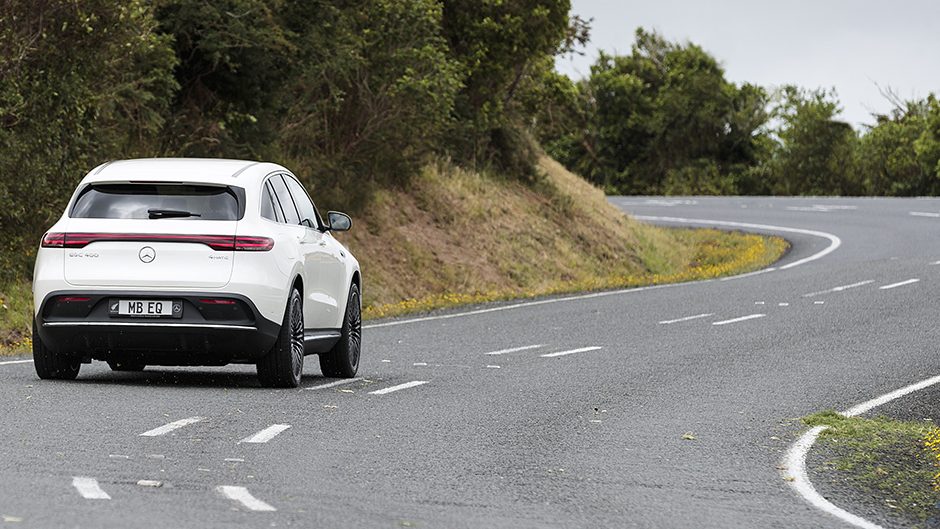
What is it exactly?
The Mercedes-Benz EQC 400 4MATIC is a five-seater medium SUV that just happens to be electric. While Mercedes is quiet on its platform, essentially it’s GLC rather than a bespoke EV architecture. There’s no frunk and a sizeable transmission hump in the rear. EQC is 100mm longer than GLC, but is smaller than e-tron for length and width. It does ride slightly lower than the Audi.
All EQCs arriving here get the AMG line treatment, adding a front apron and rear diffuser, along with 19-inch multispoke wheels. You can tell it’s an eco-warrior because of the Bluetech highlights. EQ models also get the black grille treatment and blackened headlight surrounds. There are multibeam LEDs for energy saving, while at the rear there’s a red light strip. The profile of the EQC is pleasing, if conservative, the roofline tapering but not as plunging as the GLC Coupe. That also means there’s 500L of luggage capacity with all five seats in use.
EQ is a new division for M-B, and it embodies the transition to electric mobility. The EQ range is set to grow quickly, with 10 vehicles scheduled to be marketed by 2022, though not all will be full BEVs. EQ will comprise vehicles with boosted combustion engines (48-volt mild hybrids), and plug-in hybrids as well.
Mercedes-Benz New Zealand General Manager, Lance Bennett, said New Zealand is one of the first countries to receive EQC. Of the new model he commented “We’re not the first… we simply wanted to be the best.” So is that the case?
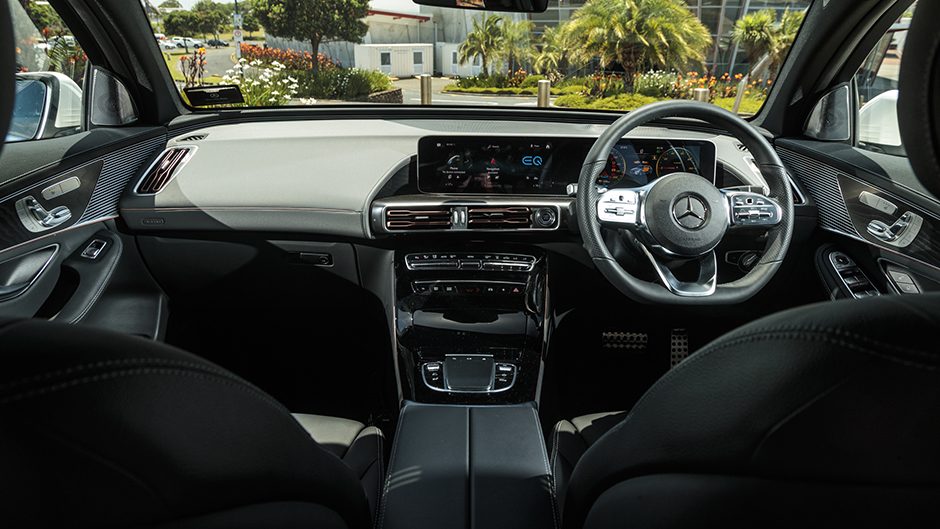
Fast fun
M-B says the EQ is a crossover. It has a 4Matic drivetrain, though most of the time it is front-wheel drive. Sometimes you can catch it out as the torque of the front-mounted motor has the wheels scrabbling before the rears chime in. The two asynchronous 150kW motors act a bit differently; the main engine is optimised for efficiency, the rear for punchy torque and dynamism. Together they generate 300kW and 765Nm of torque, enough shove for a theoretical 0-100 of 5.1sec. The battery pack sits low between the axles and is rated at 80kWh. At pick up, with a full charge, the meter suggested 433km of range, though if you turn on the AC the new answer is 370km. The disparity falls as the battery discharges.
On our COTY drive route overall energy consumption averaged just over 30kWh/100km. It goes well even in the default Comfort mode. Back in motorway driving where active cruise brings you to a halt and restarts the vehicle without the driver doing a thing, we managed 24kWh/100km, within the 22-25 figures quoted. We tried the Eco setting as well and while it’s not quite as punchy off the mark, for town running it’s still fine. Not often we find Eco tolerable but this genuinely is okay.
Verus e-tron this is palpably quicker off the mark, by almost a second zero to 100. Mercedes claims 5.1sec but all our runs started with a four, the best being 4.77sec. It genuinely feels rapid and all but matches the I-Pace zero to 100, although 80-120 it’s no different from the e-tron. Off the line it really does get gone convincingly. Even when cruising you need to be aware of speed creep, the head-up display reading 100 one minute, 120 the next. Guess that’s why adaptive cruise control is standard fit. Like the e-tron this can tow as well, with a maximum braked figure of 1800kg.
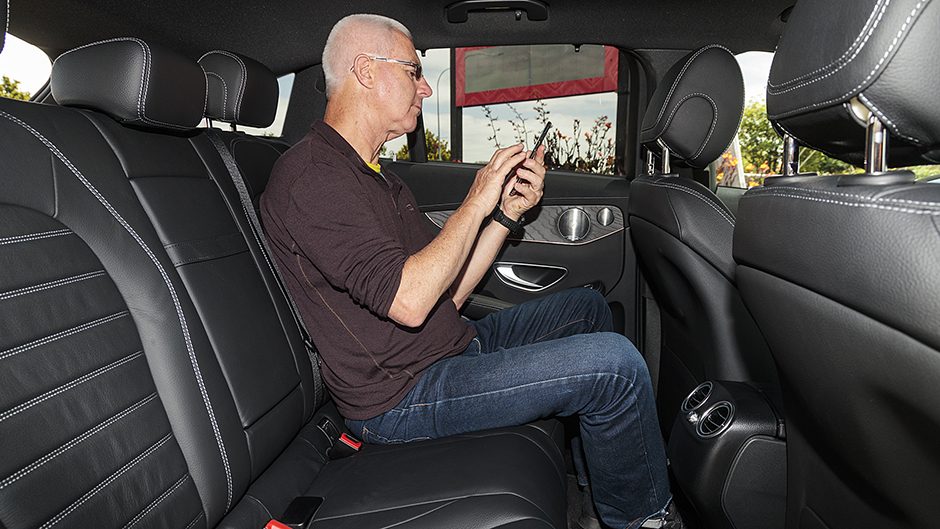
And rapid recharging
After the workout the battery was showing 47 per cent of charge left, so we hooked it up to a 50kW fast charger and in half an hour precisely it had rejuiced the battery pack to 77 per cent, adding 100km of range. That’s exactly what Mercedes states on the wrapper. And it’s capable of accepting chargers of up to 110kW, the upshot being 220km of range added in 30min. If you’re going down the plumbed-in path, the Wallbox Home basic charges at 7.5kW, meaning 15km of range per half hour. Three-phase charging at 22kW triples that. That box costs about $1300, plus the installation fee.
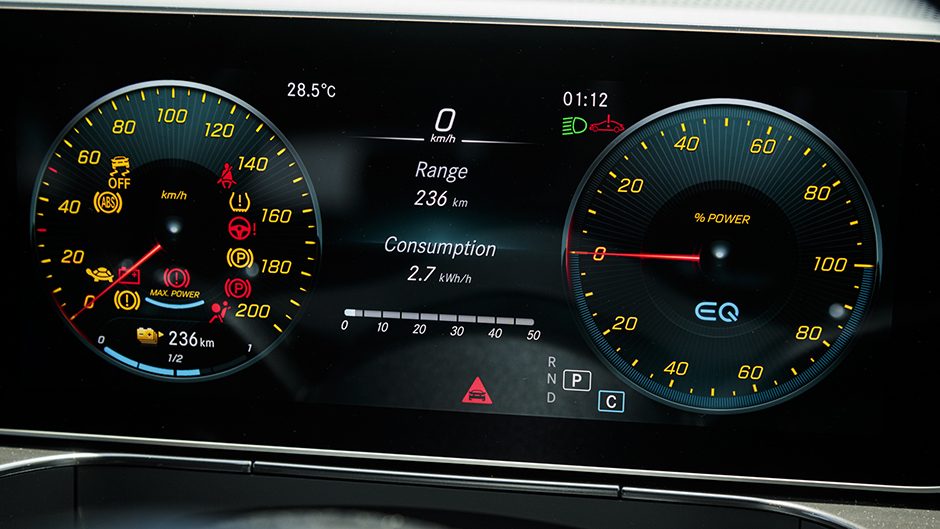
Hushpuppy
It’s eerily quiet on the go, even with those big optional 21s. And the ride is particularly accommodating, not only at town speeds but also in rural running. It doesn’t have quite the on-the-limit control of the e-tron which features adaptive damping, but with air suspension in the rear this is not only plush but also exceedingly quiet in operation. Motors, which spin up to 13,000rpm, are double isolated by rubber from the body, so are well damped. Cabin SPLs are mainly in the late 60s, a few readings in the early 70s.
As is often the case with EVs, you can drive the EQC in a ‘no-brakes’ manner. That is, you only need to activate the brake pedal when coming to a full stop because the paddles vary the amount of regeneration. In Comfort driving mode, there’s the equivalent of engine braking when not using the paddles, but by activating the left one there are two further progressive levels of brake regeneration while the right one activates the coasting mode. You can use the left paddles in town when slowing or during spirited driving, though the brake pedal isn’t as responsive as when you’re not using the regenerative steps. We recorded a best stop from 100 of 37m, partly explained by the vehicle weight of just a hair under 2.5 tonnes, 650kg of that from the battery pack.
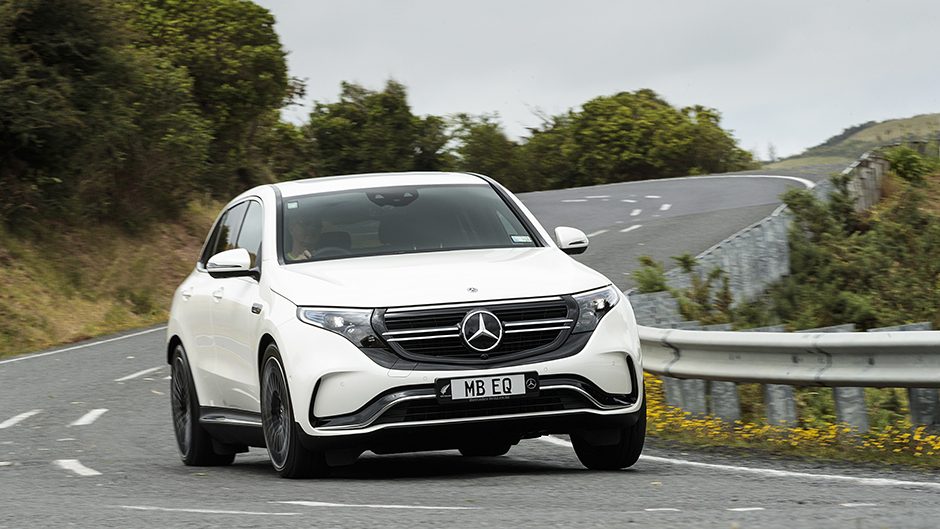
What’s standard then?
The interior is ‘progressive’, with interesting aluminium details at the end of the dash that resemble amplifier heat sinks. These arc round beneath the windscreen to the passenger side. Rose-gold coloured air vents supposedly remind of circuit boards. All very electric then. As is the Mercedes way, there’s a wide screen digital layout, the instruments seemingly extending across into the HVAC touchscreen. The latter can be controlled myriad ways. We like the MBUX voice control once you get used to it, changing channels, heater and AC settings, selecting nav destinations. It’s so much less distracting as your view remains on point.
Our particular vehicle, in designo diamond bright white ($1700), featured AMG black leather, roller sunblinds for the rear doors ($600) and 21-inch multispoke alloy wheels ($1800). So all up $147k, around the same as the e-tron 55. As standard it comes with a powered sunroof, all the expected driving assistance safety aids, including route-based speed adaptation for the active cruise, nine airbags and a powered tailgate. Safety is rated five stars by Euro NCAP testing. There’s also self parking, comfort entry, vehicle tracking and parked vehicle locator, wireless charging, smartphone integration and seat and mirror heaters. Being quiet on the go, there’s forward audible warning to make pedestrians aware of your stealthy presence.
As mentioned, this is the first of many EQ variants. It’s a fine start too. Not quite as big inside or out as e-tron, but large enough for most. Still not quite the range some might think they need but otherwise a solid start for Mercedes on its EV path.
| Model | Mercedes-Benz EQC 400 4Matic | Price | $142,900 |
| Engine | 300kW/765Nm | Drivetrain | single-speed auto, on-demand AWD |
| Fuel Use | 0L/100km | C02 Output | 0g/km |
| 0-100km/h | 4.77sec | Weight | 2497kg |


